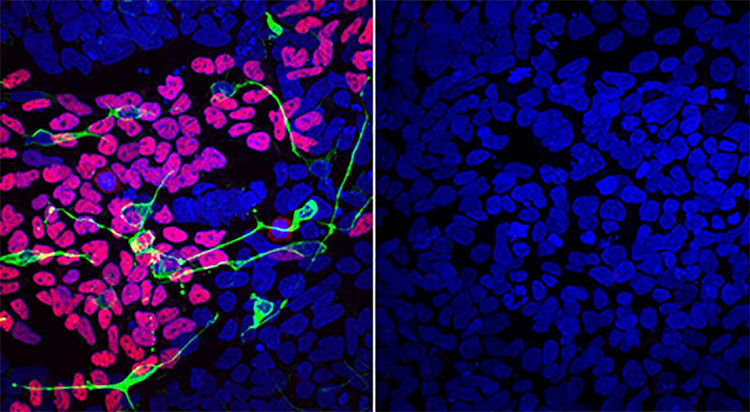IRP researchers identify new genetic disorder that affects brain, craniofacial skeleton
Analysis of patients with rare condition uncovers key pathway for human development
Researchers at the National Institutes of Health have discovered a new genetic disorder characterized by developmental delays and malformations of the brain, heart and facial features. Named linkage-specific-deubiquitylation-deficiency-induced embryonic defects syndrome (LINKED), it is caused by a mutated version of the OTUD5 gene, which interferes with key molecular steps in embryo development. The findings indicate that the newly identified pathway may be essential for human development and may also underlie other disorders that are present at birth. The information will help scientists better understand such diseases — both common and rare — and improve patient care. The results were reported Jan. 20, 2021 in Science Advances.
“Our discovery of the dysregulated neurodevelopmental pathway that underlies LINKED syndrome was only possible through the teamwork of geneticists, developmental biologists and biochemists from NIH,” said Achim Werner, Ph.D., an investigator at the National Institute of Dental and Craniofacial Research (NIDCR) and lead author. “This collaboration provided the opportunity to pinpoint the likely genetic cause of disease, and then take it a step further to precisely define the sequence of cellular events that are disrupted to cause the disease.”
The project began when David B. Beck, M.D., Ph.D., a clinical fellow in the laboratory of Dan Kastner M.D., Ph.D., at the National Human Genome Research Institute (NHGRI) and co-first author, was asked to consult on a male infant who had been born with severe birth defects that included abnormalities of the brain, craniofacial skeleton, heart and urinary tract. An in-depth examination of siblings’ and family members’ genomes, combined with genetic bioinformatics analyses, revealed a mutation in the OTUD5 gene as the likely cause of the condition. Through outreach to other researchers working on similar problems, Beck found seven additional males ranging from 1 to 14 years of age who shared symptoms with the first patient and had varying mutations in the OTUD5 gene.

Compared to a disease-free mother (left), differentiated LINKED patient cells (right) lack markers of normal development of the brain, spinal cord and craniofacial skeleton (pink, green and yellow). Image credit: Werner lab, NIDCR
This page was last updated on Friday, January 21, 2022